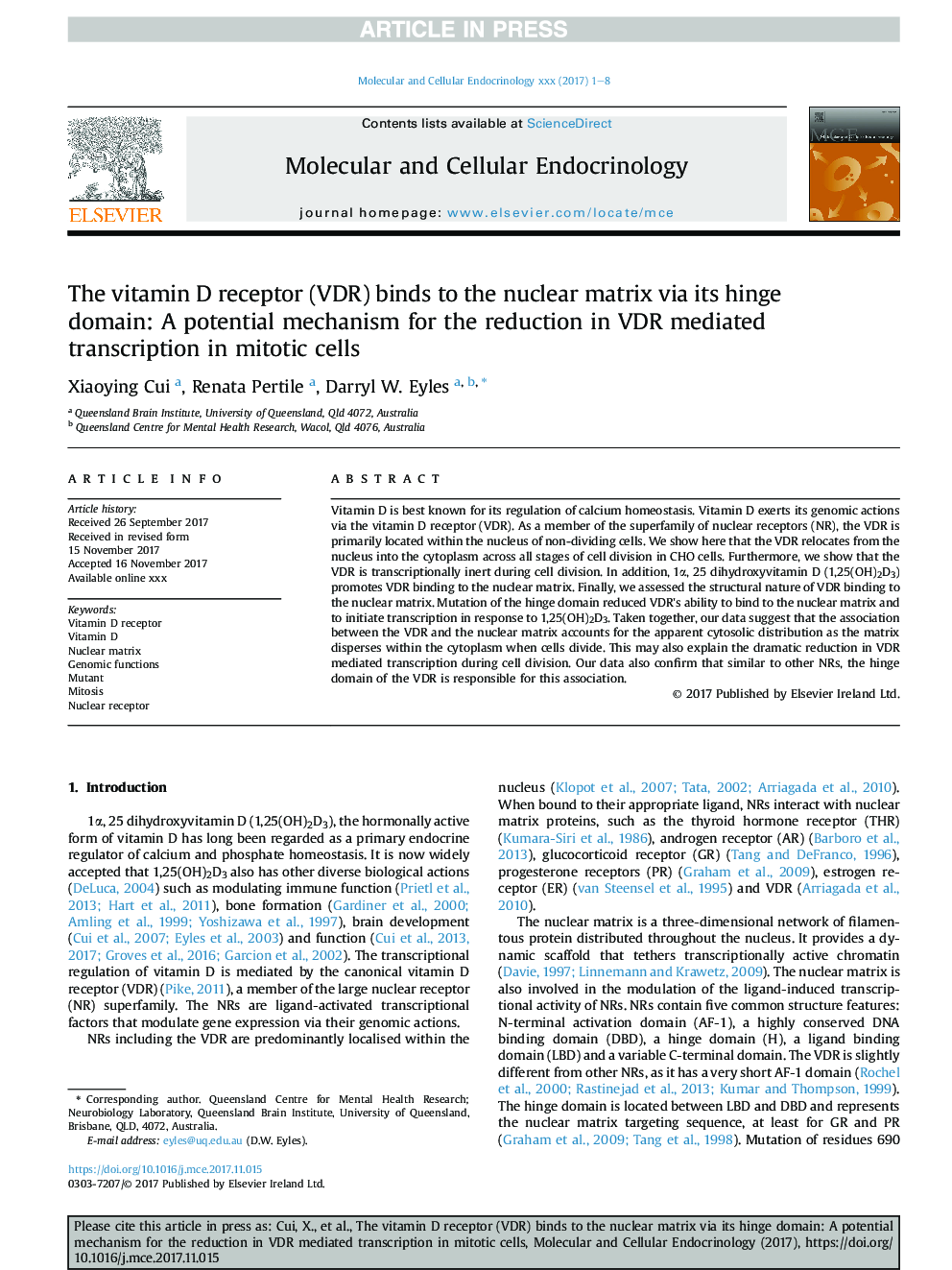| کد مقاله | کد نشریه | سال انتشار | مقاله انگلیسی | نسخه تمام متن |
|---|---|---|---|---|
| 8476345 | 1550806 | 2018 | 8 صفحه PDF | دانلود رایگان |
عنوان انگلیسی مقاله ISI
The vitamin D receptor (VDR) binds to the nuclear matrix via its hinge domain: A potential mechanism for the reduction in VDR mediated transcription in mitotic cells
دانلود مقاله + سفارش ترجمه
دانلود مقاله ISI انگلیسی
رایگان برای ایرانیان
کلمات کلیدی
موضوعات مرتبط
علوم زیستی و بیوفناوری
بیوشیمی، ژنتیک و زیست شناسی مولکولی
بیولوژی سلول
پیش نمایش صفحه اول مقاله

چکیده انگلیسی
Vitamin D is best known for its regulation of calcium homeostasis. Vitamin D exerts its genomic actions via the vitamin D receptor (VDR). As a member of the superfamily of nuclear receptors (NR), the VDR is primarily located within the nucleus of non-dividing cells. We show here that the VDR relocates from the nucleus into the cytoplasm across all stages of cell division in CHO cells. Furthermore, we show that the VDR is transcriptionally inert during cell division. In addition, 1α, 25 dihydroxyvitamin D (1,25(OH)2D3) promotes VDR binding to the nuclear matrix. Finally, we assessed the structural nature of VDR binding to the nuclear matrix. Mutation of the hinge domain reduced VDR's ability to bind to the nuclear matrix and to initiate transcription in response to 1,25(OH)2D3. Taken together, our data suggest that the association between the VDR and the nuclear matrix accounts for the apparent cytosolic distribution as the matrix disperses within the cytoplasm when cells divide. This may also explain the dramatic reduction in VDR mediated transcription during cell division. Our data also confirm that similar to other NRs, the hinge domain of the VDR is responsible for this association.
ناشر
Database: Elsevier - ScienceDirect (ساینس دایرکت)
Journal: Molecular and Cellular Endocrinology - Volume 472, 5 September 2018, Pages 18-25
Journal: Molecular and Cellular Endocrinology - Volume 472, 5 September 2018, Pages 18-25
نویسندگان
Xiaoying Cui, Renata Pertile, Darryl W. Eyles,